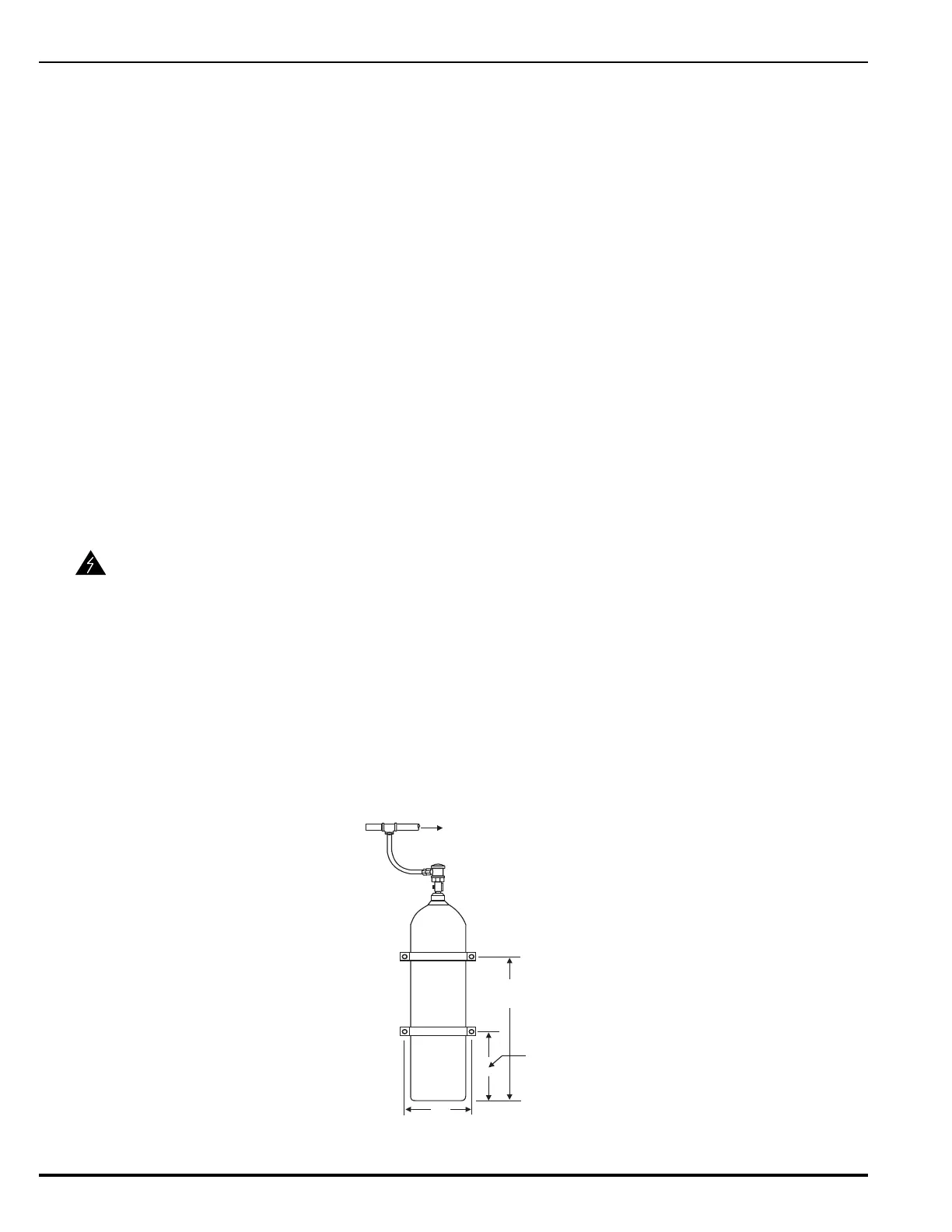Installation
April 2020 4-38 06-237619-001
4-17 NITROGEN PILOT CYLINDER ACCESSORIES INSTALLATION
Use the nitrogen pilot cylinders to drive either nitrogen time delays or sirens.
4-17.1 Installation of Nitrogen Pilot Cylinder, P/N WK-877940-000 and
Mounting Bracket, P/N WK-877845-000
Follow these instructions to install the 108 cu.in. Nitrogen pilot cylinder:
1. Locate the nitrogen cylinder mounting bracket in an area where the cylinder valve assembly
and control head will be protected from inclement weather by a suitable total or partial en-
closure, preferably adjacent to the agent storage cylinders.
2. Install the mounting bracket clamps and hardware. Install the nitrogen cylinder in position
in a mounting bracket; tighten sufficiently to hold the cylinder in place while allowing the
cylinder enough free play to be rotated.
3. Turn the cylinder until the cylinder valve discharge outlet is in the desired position. The ni-
trogen cylinder must be positioned so that control head is readily accessible during manual
operation.
4. Securely tighten the mounting bracket clamps and hardware.
5. Attach the adapter (P/N WK-699205-010) and connect the nitrogen lines.
4-17.2 Nitrogen Pilot Cylinder Installation, 1040 cu. in. P/N 90-101040-000
The nitrogen pilot cylinders must be located as close to the hazard area as possible. The
storage location must be protected from the elements and maintained at a temperature
between 32°F (0°C) and 130°F (54°C). External heating and/or cooling may be required to
maintain this temperature range. Cylinders should be raised at least 2 in. (50 mm) from the
floor using a suitable bracket or blocks if the area is regularly washed down or is subject to
environmental wetting.
Single cylinders should be installed using two straps, P/N WK-270014-000, installed at the
heights shown in Figure 4-28. See Table 4-17 for strap dimensions.
Figure 4-28. Typical 1040 cu. in. Nitrogen Pilot Cylinder Strap Installation
WARNING
Nitrogen cylinders must not be moved unless the discharge and control heads
have been removed and the protection caps are installed. Failure to follow these
instructions could result in inadvertent discharge, serious bodily injury, death
or property damage.

